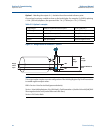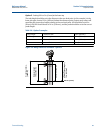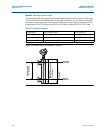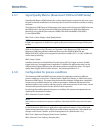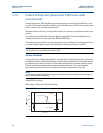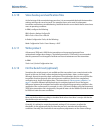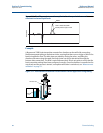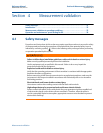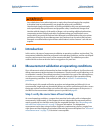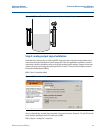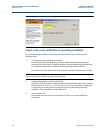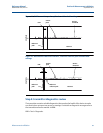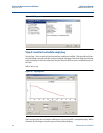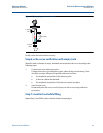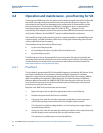
52
Reference Manual
00809-0700-4530, Rev AA
Section 4: Measurement validation
September 2013
Measurement validation
4.2 Introduction
In this section, the steps of measurement validation at operating conditions are described. The
measurement validation should be performed under operating conditions, and the actual liquid
must be used to ensure the accuracy of the measurement data. The validation procedure
outlined in this section can also be used as a suggestion of a proof test.
4.3 Measurement validation at operating conditions
Once a Rosemount radar level transmitter has been installed and configured, it will continuously
deliver measurements with a minimum of maintenance. The electronics are self-adjusting, so no
re-calibration is needed. The outlined procedure is intended to be a part of the startup process,
or used as a re-occurring functional check, to validate the integrity of the transmitter during
actual operating conditions. If the verification fails, refer to Section 5: Troubleshooting
procedures.
All of the steps in this sample verification procedure are independent and although it is not
recommended, single steps may be omitted. Before you start the verification procedure, ensure
that proper actions have been taken not to affect the safety or performance of the process. A
checklist for the measurement validation process is provided on page 83.
Step 1: verify the correctness of level reading
At normal operating conditions, compare the transmitter level reading with an independent
measurement. Unfortunately, it often happens that two independent measurements will not
match up perfectly, but check the sanity and the acceptable deviation. See “Reconciling radar
with other level measurements” on page 79 for more information. The independent
measurement can be done using a number of different complementary devices, ranging from
sight-glasses and hand-dipping to redundant differential-pressure and displacer. See “Sources of
measurement error” on page 73, if deviation is unacceptable.
Any substitution of non-authorized parts or repair, other than exchanging the complete
transmitter head or probe assembly, may jeopardize safety and is prohibited.
Unauthorized changes to the product are strictly prohibited as they may unintentionally
and unpredictably alter performance and jeopardize safety. Unauthorized changes that
interfere with the integrity of the welds or flanges, such as making additional perforations,
compromise product integrity and safety. Equipment ratings and certifications are no
longer valid on any products that have been damaged or modified without the prior written
permission of Emerson Process Management. Any continued use of product that has been
damaged or modified without prior written authorization is at the customer’s sole risk and
expense.



